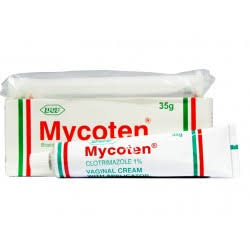Advantage And Disadvantage Of Topical Route Of Drug Administration
Topical medication is a medication that is applied to a particular place on or in the body. Most often topical administration means application to body surfaces such as the skin or mucous membranes to treat ailments via a large range of classes including creams, foams, ointments, gels, lotions, sprays, powders, aerosols, liniments, and drops. Many topical medications are epicutaneous, meaning that they are applied directly to the skin. Topical medications may also be inhalational, such as asthma medications, or applied to the surface of tissues other than the skin, such as eye drops applied to the conjunctiva, or ear drops placed in the ear, or medications applied to the surface of a tooth.
 |
| Topical route of administration |
The definition of the topical route of administration sometimes states that both the application location and the pharmacodynamic effect thereof is local. In other cases, topical is defined as applied to a localized area of the body or to the surface of a body part regardless of the location of the effect. By this definition, topical administration also includes transdermal application, where the substance is administered onto the skin but is absorbed into the body to attain systemic distribution.
Read Also: Advantage And Disadvantage Of Oral Route Of Drug Administration
If defined strictly as having local effect, the topical route of administration can also include enteral administration of medications that are poorly absorbable by the gastrointestinal tract.
Examples Of Topical Route Of Drug Administration
1. The use of eye drops containing beta blockers in the treatment of glaucoma;
2. The application of topical steroids in the management of dermatitis;
3. The use of inhaled bronchodilators in the treatment of asthma;
4. The insertion of pessaries containing clotrimazole in the treatment of vaginal candidiasis
Advantage Of Topical Route Of Drug Administration
1. Low risk of systemic adverse events and drug interactions
2. Higher concentration of the active pharmaceutical ingredient (API) when applied to the affected area
3. Painless with no issue with bitter taste (except for some drops that gets into the throat)
4. Smaller amount of drug is used
5. Lack of effect on intestinal florae and gastrointestinal incompatibility
6. Low cost
7. Ease of administration to a young child
8. Preferred by patients and their parents over oral treatment
10. Convenient, compliance and can be self administered
11. Avoidance of first pass metabolism
12. Useful for local delivery of agents especially those with side effects with other routes
Read Also: Overview Of Route Of Drug Administration
Disadvantage Of Topical Route Of Drug Administration
1. poorly lipid-soluble and high molecular weight are not absorbed by the skin or mucous membranes
2. local skin irritation at the site of application may occur
3. Can be affected by environmental conditions such as temperature
4. Delay onset of action
5. Can stain clothing and produce foul odour
6. dosing accuracy is difficult to achieve
7. Only suitable for drugs requiring low plasma concentration for action
8. Enzymes in the epidermis may denature the drugs

Comments
Post a Comment
Please have your say